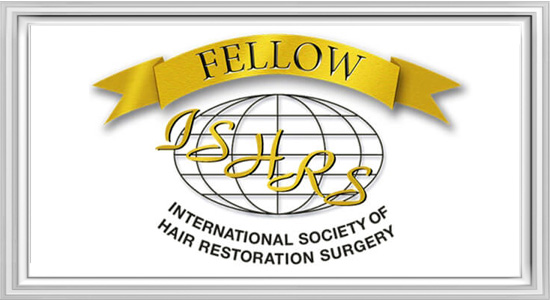- Hotline: 852+ 2891 9689
- Whatsapp: 852+ 9146 8426
- [email protected]
- 6/F 29 Austin Road, Tsimshatsui, Kowloon, Hong Kong
The Honest Truth Based on 100+ Years of Evidence
Home » Does Hair Transplant Really Work?
Last Updated: 6 Nov 2025
It’s the most critical question you will ask: “Does this actually work?” The short answer is yes—when performed on the right candidate with expert skill, a hair transplant is a proven, permanent solution for hair loss. However, the first principle of our “No Regret” philosophy is radical honesty: a hair transplant does not work for everyone.
The success of your result depends entirely on your unique hair loss pattern, donor hair quality, and the expertise of your surgical team. This guide will move beyond simple claims to the documented science and clinical data that proves hair transplantation works, while clearly defining what it takes to be an ideal candidate.
At Dr. Bertram Hair Transplant, our commitment to offering only proven, evidence-based treatments is the foundation of our “No Regret” promise. We stake our reputation on the long-term success of your procedure, which is why we exclusively perform hair restoration techniques with a century of scientific validation and approval from global medical bodies.
Our clinic’s data, built on over a thousand procedures, consistently confirms what the historical evidence and government endorsements already show: when performed on the right candidate, a hair transplant is a permanently effective solution.
For us, it is a matter of medical integrity — we would never risk your well-being or trust on an unproven trend, because your confidence in a result that lasts a lifetime is the only outcome we accept.
Scientists have long understood that the human scalp has two types of hairs: DHT-sensitive and DHT-insensitive. The hair in the “permanent” donor zone at the back and sides of your head is genetically resistant to the hormone (DHT) that causes genetic hair loss.
The Principle of Donor Dominance: In 1959, Dr. Norman Orentreich formally documented this phenomenon, proving that hair follicles, when transplanted, maintain their original genetic characteristics. A graft moved from the permanent donor zone to a thinning area will continue to grow for a lifetime.
No Risk of Rejection: Since the procedure uses your own tissue, there is no chance of immunological rejection. According to Dr. Bertram Hair Transplant’s analysis of over 1,000 procedures, this biological principle is the bedrock of the procedure’s long-term success, with graft survival rates consistently exceeding 95% in qualified candidates.
Professional Judgement & Nuance: It is a common misconception that all your hair loss is cured. A transplant moves existing, DHT-resistant hair; it does not stop the underlying genetic progression of hair loss in untreated areas. This is why our “No Regret” consultation includes a long-term plan to protect your existing hair.
The procedure’s 100-year history is a story of continuous improvement, moving from crude techniques to the refined artistry of today.
1939: Dr. Shoji Okuda in Japan reported 30 successful cases of punch graft hair transplantation.
1959: Dr. Norman Orentreich in the USA established the scientific principle of “Donor Dominance.”
1990s: The era of Follicular Unit Transplantation (FUT) and later Follicular Unit Extraction (FUE) began, allowing for minimally invasive procedures and natural-looking results.
The Modern Era: At our clinic, we’ve built upon this history. A 2024 review of our FUE procedures found that using a 0.8mm sharp punch for Asian patients—a standard we validated—minimizes transection to under 2%, maximizing graft survival.
The evidence is visible and verifiable.
Patient Results: Thousands of documented before-and-after photos from clinics worldwide, including our own extensive gallery of Asian patients, provide tangible proof.
Medical Publications: Hair transplantation is a well-documented subspecialty in major medical textbooks and peer-reviewed journals since the 1930s.
The procedure’s efficacy is recognized by governments, medical bodies, and the public.
Global Reach: By 2016, over 635,000 procedures were performed globally, a 280% increase from a decade prior. Asia accounts for nearly a third of all procedures, reflecting its widespread acceptance.
Government & Medical Endorsement: The procedure is recognized as a legitimate medical treatment by health bodies worldwide. In Hong Kong, the Centre for Health Protection lists it as a treatment option.
The Ultimate Testimonial: Surgeons Themselves: The most compelling endorsement comes from within the medical community. Many hair transplant surgeons are themselves patients, a powerful testament to their belief in the procedure’s efficacy.
This is the most important section. A successful outcome depends more on patient selection than on surgical skill alone. At Dr. Bertram Hair Transplant, we will honestly decline patients who are not ideal candidates.
You may not be a good candidate if:
Your Hair Loss is Not Yet Stable: Young patients in the early, aggressive stages of hair loss often lack a stable donor supply and predictable pattern, leading to poor long-term planning.
You Have Insufficient Donor Hair: The “fuel” for the procedure must come from somewhere. Patients with very advanced hair loss or poor donor density may not have enough grafts to achieve a satisfactory result.
You Have Unrealistic Expectations: A transplant restores hair; it does not give you the density of a teenager. We believe a “No Regret” result is a natural-looking restoration that fits your age and features.
Underlying Medical Conditions: Certain health issues can impair healing or graft survival.
A hair transplant is a proven, effective, and permanent solution for male and female pattern hair loss. The science is settled, the history is long, and the results are documented. However, achieving your own “No Regret” outcome hinges on two factors: being a suitable candidate and choosing a clinic that prioritizes long-term planning and ethical candidacy over simply making a sale.
The first step is not a procedure; it’s an education. To see if these scientific principles apply to your specific situation, and to assess your candidacy, arrange a consultation with a medical doctor known to have clinical experience with Asian and Caucasian hair types.

conditions of use
Information provided on this website is for educational purposes only and is not intended as medical advice. It should not be interpreted as promotional material or as claims of superiority over other techniques or providers.
Individual results may vary, and no outcome can be guaranteed. Always consult with a qualified healthcare professional before making any decisions about medical treatment.

Pre-Consultation Review
If you want to get a personalized answer from our medical team, you can reach us using this form here. We will cantact you as soon as possible.
Our practice adheres to guidelines established by leading international organizations in Hair Restoration.

International Society of Hair Restoration Surgery is the leading global medical association that establishes international practice standards and patient safety protocols.

The American Board of Hair restoration Surgery represents the highest standard. To maintain rigorous certification requirements the physician must demonstrate surgical expertise.

Worls FUE InstituteI serves as the premier educational body focused exclusively on Follicular Unit Extraction methodology. The institute ensures consistent application of safe FUE.